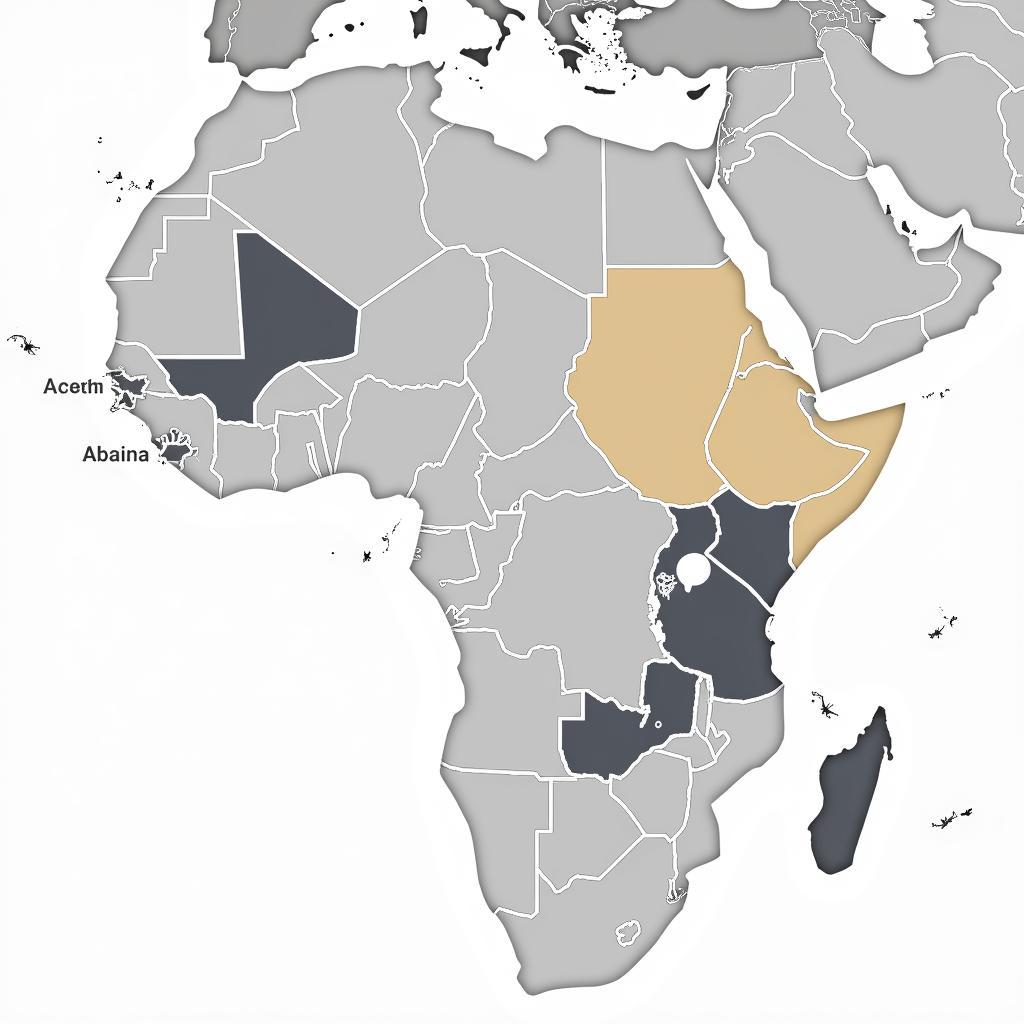A Deep Dive into African Bronze Sculpture History
African Bronze Sculpture History is a rich and complex tapestry woven over centuries, showcasing the artistic brilliance and technical mastery of various African cultures. From the intricate details of Benin bronzes to the expressive forms of Yoruba sculptures, these artifacts offer invaluable insights into the history, beliefs, and social structures of their creators. Let’s explore the fascinating world of African bronze casting.
The Origins and Evolution of African Bronze Sculpture
Bronze casting in Africa wasn’t a monolithic practice. It developed independently in different regions, each with its own unique style and techniques. While evidence suggests early copper alloy casting in the Nok culture of Nigeria dating back to around 500 BC, it was the Ife and Benin kingdoms, also in present-day Nigeria, that truly elevated bronze casting to an art form. african art forms demonstrates the diversity in expression throughout the continent. The Ife, known for their naturalistic and often idealized representations of royalty and deities, paved the way for the Benin Kingdom’s more stylized and narrative-driven bronze works.
From the 13th century onwards, the Benin Kingdom flourished, becoming renowned for its elaborate bronze plaques, sculptures, and other ceremonial objects. These bronzes depicted historical events, courtly life, and spiritual beliefs, providing a visual record of the kingdom’s history and culture.
The Lost-Wax Casting Technique: A Testament to Ingenuity
The remarkable quality of African bronze sculptures is largely attributed to the sophisticated lost-wax casting technique employed by skilled artisans. This intricate process involved creating a wax model of the desired sculpture, covering it with a clay mold, and then heating the mold to melt out the wax, leaving a hollow cavity. Molten bronze was then poured into the cavity, taking the shape of the original wax model. Once cooled, the clay mold was broken, revealing the bronze sculpture within.
This technique allowed for exceptional detail and intricacy, as evidenced by the elaborate hairstyles, jewelry, and clothing depicted on many African bronze sculptures. This precision and artistry speaks to the deep cultural significance of these objects. “The lost-wax process wasn’t merely a technical skill; it was an act of creation imbued with spiritual significance,” explains Dr. Adeola Onafowokan, a renowned art historian specializing in West African art.
Beyond Benin: Exploring Other Bronze Casting Traditions
While Benin bronzes often dominate discussions of African bronze sculpture, it’s crucial to recognize the diverse bronze casting traditions across the continent. The Yoruba people, for example, also have a rich history of bronze casting, creating magnificent sculptures of deities, rulers, and other important figures. african figurines provides more insight into the varied sculptural forms found across Africa. Their works are characterized by a distinctive style, often featuring elaborate headdresses and expressive facial features.
Furthermore, bronze casting was practiced in other regions, including present-day Ghana and Côte d’Ivoire. While less widely known than Benin bronzes, these traditions produced remarkable artworks that reflect the unique cultural identities of their creators.
The Cultural Significance of African Bronze Sculptures
African bronze sculptures were not merely decorative objects; they held profound cultural and spiritual significance. They served as symbols of power, prestige, and spiritual authority, playing crucial roles in religious ceremonies, political rituals, and social life. Many sculptures depicted deities, ancestors, or rulers, embodying the spiritual and political power they represented.
“These bronze sculptures served as a powerful means of communicating cultural values and beliefs,” notes Dr. Chinua Achebe, a leading scholar of African art. “They were not just objects of beauty, but also vessels of history, memory, and spiritual power.” african jewellery designs further illustrate the intricate artistic skills prevalent in various African cultures.
African Bronze Sculpture History: A Legacy of Artistic Innovation
The history of African bronze sculpture is a testament to the artistic ingenuity and cultural richness of the continent. From the early experiments with copper alloys to the sophisticated lost-wax casting techniques, African artists have consistently pushed the boundaries of their craft, creating works of enduring beauty and profound cultural significance. african necklace exemplifies the creativity and artistry present in African adornment. Their legacy continues to inspire artists and scholars worldwide, offering a glimpse into the vibrant and complex history of Africa. african elephant sculpture highlights the significant role of animals in African art. Understanding African bronze sculpture history provides a deeper appreciation of African art and its contribution to global artistic heritage.
FAQ
-
What is the lost-wax casting technique?
The lost-wax casting technique involves creating a wax model, covering it with clay, melting out the wax, and pouring molten bronze into the cavity. -
Where are Benin bronzes from?
Benin bronzes originate from the Benin Kingdom, located in present-day Nigeria. -
What is the cultural significance of African bronze sculptures?
They served as symbols of power, prestige, and spiritual authority, playing crucial roles in religious ceremonies, political rituals, and social life. -
What other African cultures practiced bronze casting?
The Yoruba people, along with cultures in present-day Ghana and Côte d’Ivoire, also practiced bronze casting. -
Why is the history of African bronze sculpture important?
It showcases the artistic ingenuity and cultural richness of the continent, providing valuable insights into African history and art. -
When did bronze casting begin in Africa?
Evidence suggests early bronze casting in the Nok culture around 500 BC. -
What materials were used in African bronze sculptures?
Primarily bronze, but copper alloys were also used in earlier periods.
For further assistance, please contact us at +255768904061, [email protected], or visit our office at Mbarali DC Mawindi, Kangaga, Tanzania. Our customer service team is available 24/7.

